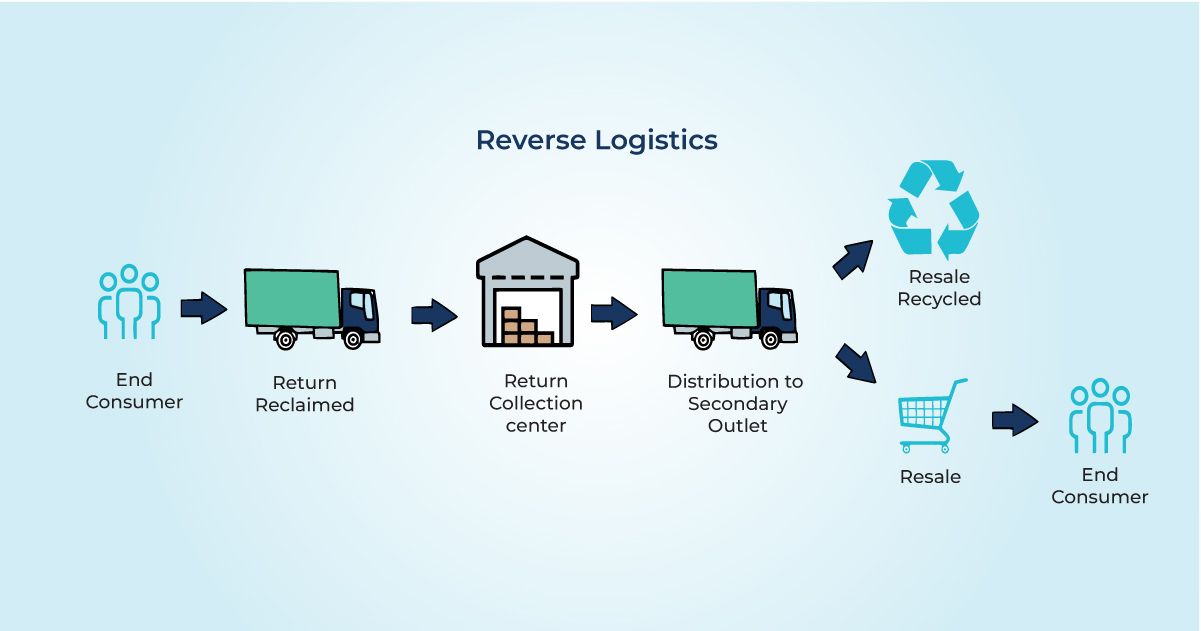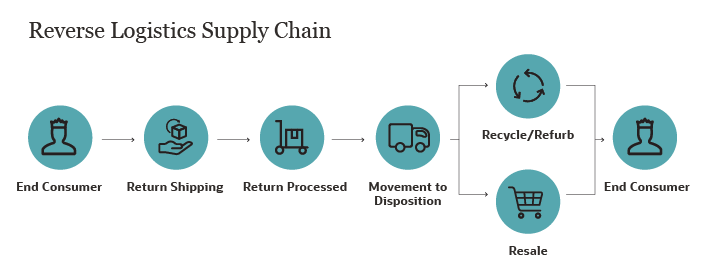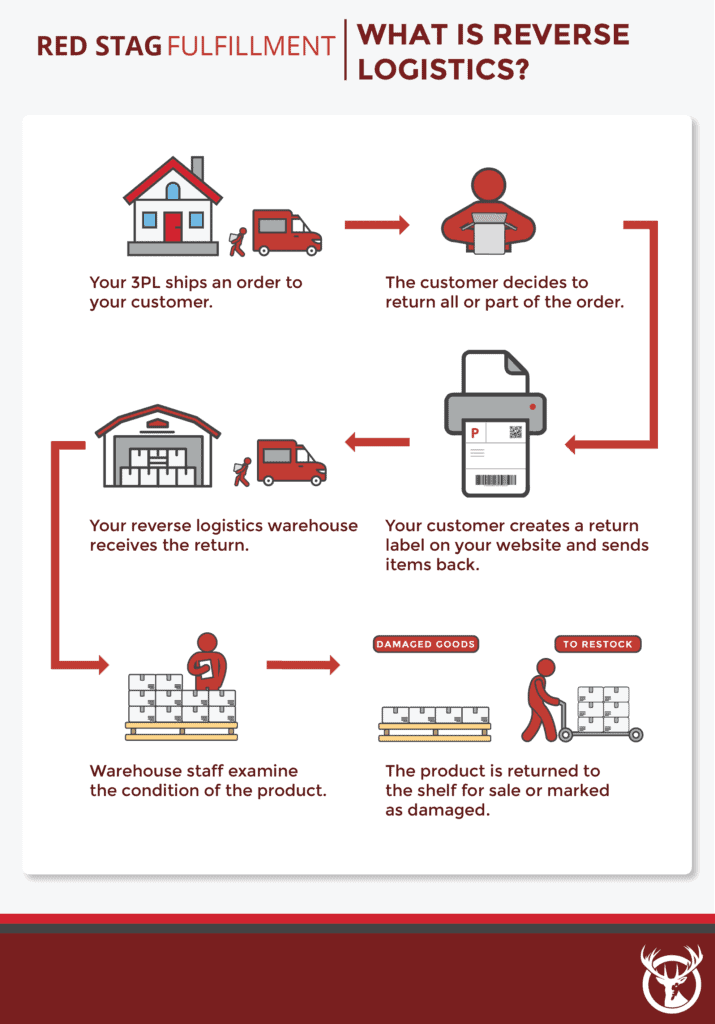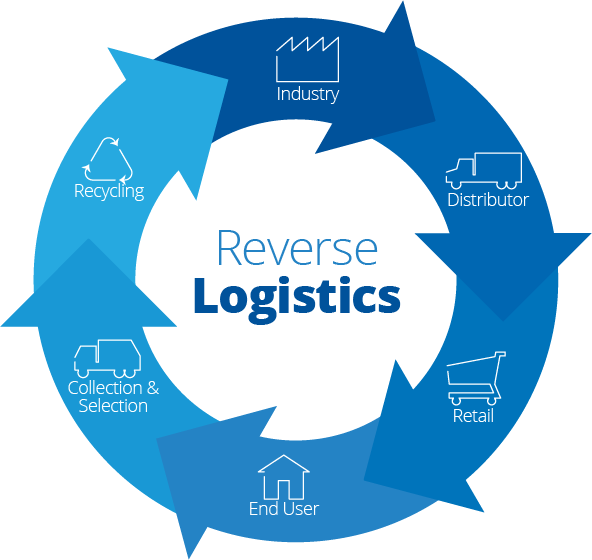# Reverse Logistics and Returns: A Comprehensive Guide to Managing Post-Sale Processes
In today’s competitive market, **reverse logistics** plays a critical role in maintaining customer satisfaction and operational efficiency. As e-commerce and retail industries continue to grow, businesses must develop robust **return management strategies** to handle product returns effectively. This article explores the concept of reverse logistics, its benefits, challenges, and best practices to streamline post-sale operations.

---
## What Is Reverse Logistics?
**Reverse logistics** refers to the process of managing the return of goods from customers back to the business or distribution center. It includes handling returns, refurbishments, recycling, and disposal. Unlike traditional logistics, which focuses on delivering products to consumers, reverse logistics focuses on the **flow of goods in the opposite direction**.
Reverse logistics is common in industries like **retail, e-commerce, automotive**, and **electronics**, where returns and repairs are integral to customer service.
---
## Key Steps in Reverse Logistics
### 1. Return Authorization
The first step in reverse logistics is obtaining **return authorization**. Customers request a return, and the business evaluates the eligibility based on policies.
### 2. Transportation
Returned items are shipped back to warehouses, repair centers, or **recycling facilities**. Efficient transportation is vital to minimize costs.
### 3. Inspection and Sorting
Products are inspected for damage or functionality and sorted into categories such as **resellable**, **refurbishable**, or **disposable**.
### 4. Refurbishment or Recycling
Goods in suitable condition are refurbished for resale, while damaged items are recycled or disposed of responsibly.
### 5. Restocking or Disposal
Resellable items are restocked, while non-recoverable goods are either donated or discarded.

---
## Benefits of Reverse Logistics
Reverse logistics offers several significant benefits:
### 1. Improved Customer Satisfaction
A seamless return process fosters **customer trust and loyalty**. Offering hassle-free returns demonstrates your commitment to customer service.
### 2. Cost Savings
Efficient reverse logistics can minimize costs related to **waste disposal**, storage, and transportation by reusing or reselling returned products.
### 3. Environmental Sustainability
By recycling and refurbishing products, businesses can reduce their carbon footprint, contributing to **sustainability goals**.
### 4. Enhanced Inventory Management
Handling returns efficiently helps maintain accurate inventory levels, reducing the risk of **overstocking** or shortages.
---
## Challenges in Reverse Logistics
While reverse logistics offers numerous advantages, it comes with challenges:
### 1. Complex Processes
Managing returns requires coordination across departments, including **customer service, logistics**, and **warehousing**.
### 2. High Costs
Reverse logistics involves additional transportation and processing costs, especially for items that require **repair or recycling**.
### 3. Fraudulent Returns
Businesses may face issues like **return fraud**, where customers return used or counterfeit items.
### 4. Data and Analytics
Tracking and analyzing returns data is crucial but can be challenging without the right **technology infrastructure**.
> **Pro Tip**: Leverage advanced software solutions like **inventory management systems** to streamline reverse logistics operations and gain valuable insights.
---
## Reverse Logistics in E-Commerce
E-commerce businesses face high return rates due to reasons like **size mismatches, damaged goods**, or **buyer’s remorse**. To remain competitive, online retailers must prioritize efficient **return policies** and logistics systems.
### Best Practices for E-Commerce Returns:
- Offer **prepaid shipping labels** to simplify the return process.
- Communicate a clear and transparent **returns policy** on your website.
- Use automation tools to track returns and issue refunds promptly.

---
## Strategies for Effective Reverse Logistics
### 1. Adopt Circular Economy Practices
Encourage recycling and reuse of materials to create a **sustainable business model**.
### 2. Invest in Technology
Use advanced tools like **warehouse management systems (WMS)** or **returns management software** to automate and optimize processes.
### 3. Build Strong Partnerships
Collaborate with reliable logistics providers, recyclers, and refurbishment partners to ensure **cost-effective operations**.
### 4. Train Your Team
Educate employees on reverse logistics processes to improve **efficiency** and **customer satisfaction**.
---
## Real-World Example: Amazon’s Return Policy
Amazon’s customer-centric **returns policy** is a gold standard in reverse logistics. It allows customers to return items with ease, often offering **instant refunds** or **replacement options**. This approach enhances customer trust while leveraging its extensive logistics network to manage returns efficiently.
> **Related Reading**: Learn more about [supply chain management](https://www.investopedia.com/terms/s/supply-chain-management.asp).

---
## FAQs About Reverse Logistics
### 1. **What is the main goal of reverse logistics?**
The primary goal is to **recover value** from returned goods while minimizing waste and enhancing customer satisfaction.
### 2. **How does reverse logistics differ from traditional logistics?**
Traditional logistics focuses on delivering products to customers, while reverse logistics manages the **return journey** of goods back to the business.
### 3. **What industries benefit the most from reverse logistics?**
Industries like **e-commerce, retail, electronics, and automotive** benefit significantly due to frequent returns and refurbishments.
### 4. **How can businesses reduce return rates?**
Clear product descriptions, quality assurance, and efficient **customer support** can help reduce returns.
---
## Conclusion: The Future of Reverse Logistics
As businesses strive to meet the demands of modern consumers, **reverse logistics** has become a critical component of supply chain management. By implementing efficient processes, leveraging technology, and focusing on sustainability, businesses can turn returns into opportunities for growth.
Whether you’re an e-commerce retailer or a manufacturer, **embracing reverse logistics** will not only improve your bottom line but also enhance your brand reputation in a competitive market.
> **Ready to optimize your logistics strategy?** Explore tools and strategies to streamline operations and stay ahead of the curve.

